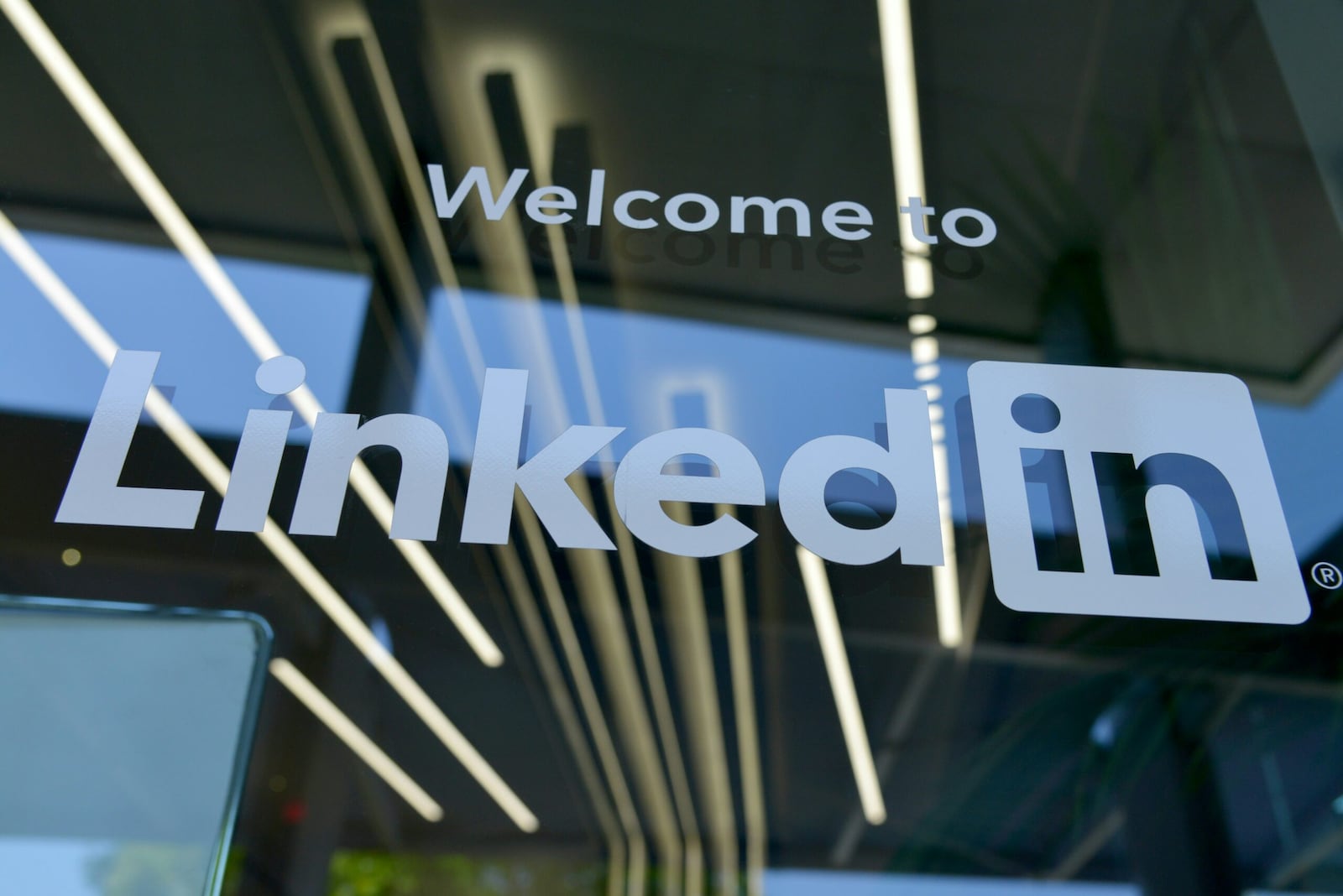, LinkedIn is a marketplace of ideas, opportunities and professional growth.
Leaders within Utah’s business community see LinkedIn as more than a tool for career advancement; they recognize it as a powerful tool for change. Influencers on the platform amplify personal brands, foster networks, spark movements and even change behavior for the better. This versatility underlines LinkedIn’s role as a canvas for professional dreams and a catalyst for community advancement.
Suzi Owens, senior director of Product Communications at LinkedIn, has advice for professionals or businesses looking to build their brand presence: “First, be authentic — the more authentic you are, the more likely you’ll get people talking and responding; second, talk about the workforce topics that matter to you, and your passion will show through; and third, share on LinkedIn and try out different formats like video or newsletters. We’re seeing executives have a lot of success with longer-form newsletters and by contributing to collaborative articles.”.
Our selection of must-follow Utah business leaders recognizes those who drive meaningful change, engage honestly, unite diverse groups, influence positive behaviors and champion inclusive dialogues. Through their compelling content, these thought leaders shape their industries and empower others to raise their voices.
Utah’s must-follow business professionals
Andrew Bagley | President | Boncom
Andrew Bagley is a behavioral psychology expert and marketing strategist who helps cause-based organizations change behavior, particularly in the face of societal challenges. His expertise in designing campaigns that influence public behavior has made him a go-to voice for insights on creating positive change and strategically building an audience.
“By maintaining a steady presence, you’re not just sharing content; you’re embedding yourself in the collective memory of your audience, making it more likely they’ll think of you when they need someone with your expertise. It’s a subtle yet powerful way to build your influence and network over time,” Bagley says.
Bagley creates content that sparks conversations and shifts perspectives. His LinkedIn presence blends his professional acumen and social consciousness.
“Thought leadership is all about providing value to other people. It’s not about showing off. Don’t let your ego get pulled into the comparison game. Concentrate on what you can offer people that could make their lives better,” Bagley says.

Owner | Adamantium Real Estate
Brandon Fugal is a name synonymous with commercial real estate and is also known for his involvement with the enigmatic Skinwalker Ranch. His multidimensional career makes him a well-rounded thought leader.
“Due to the dynamic range of ventures I am involved in, I am fortunate to have a truly global community of connections and followers. There is never a dull moment,” Fugal says.
Fugal’s approachability and responsiveness have built him a reputation as a grounded yet influential figure.
“Be yourself, and don’t be afraid to ask for help or discuss a topic that may be deemed divisive or controversial,” Fugal says. “We need social media and LinkedIn to be a safe and enlightening place for professionals to learn, interact, disagree and present differing views in a respectful way.”
Nichole Harrop | Co-Founder | Growvio
Nichole Harrop is known for her expertise in leadership development, especially in preparing emerging leaders for success. She focuses on the often-overlooked soft transition from high performance to effective leadership and offers unique insights and solutions.
“I truly want people to feel like they know me as a friend. Part of that is showing many of the ups and downs I’ve had in a way that can remain authentic but also self-aware. It’s a way to feel connected as opposed to feeling sorry for me,” Harrop says.
Harrop uses LinkedIn as a broadcasting platform and a conduit for meaningful connections.
“We will have more equity within companies when we hear from voices in all roles not just leadership and above. You don’t need a certain title or amount of connections,” Harrop says.
“Start by engaging in the feed with meaningful comments. Connect with people when you resonate with what they are saying and feel inspired by the content you’re seeing; posting once a week is a great start.”
Lindsey Ivie | Co-Founder & Managing Partner | Ivie League
Lindsey Ivie works with nonprofits and foundations to help them achieve their philanthropic missions and increase their impact within the communities they serve.
“I have used LinkedIn as a way to bring the community together for networking events offline and online. This is a great way to build relationships and support people you haven’t met in person,” Ivie says.
Ivie believes sharing stories is one of the most powerful ways to connect with your audience and loves learning more about a connection’s “why.”
“Instead of using the platform to just drive sales, find ways to add value through your content. This can be done through providing resources that have helped you in your growth, community events, and helping those searching for jobs,” Ivie says.Nate Randle | CEO | Gabb
Nate Randle uses LinkedIn to raise awareness for a variety of social issues, including mental health and the well-being of children, which aligns with his company’s mission.
“Everyone is now aware of the dangers and addictions associated with social media and too much screen time. As I share what we are doing at Gabb to protect kids with safe technology, it resonates with the business community,” Randle says.
Randle also highlights charitable initiatives, shares personal stories and advocates for single parents.
“I talk about supporting single parents because I grew up in a single-parent home. The LinkedIn community always jumps in to help me with connecting single moms and dads to job opportunities,” Randle says. “We need more leaders taking action to help people with their careers and job searches. Doing instead of talking or telling is where real impact is made.
Paul Shin | VP, Marketing | B10 Capital
CEO | Tacos Together
As a seasoned venture capitalist and a fervent advocate for community-based initiatives, Paul Shin succeeds in building businesses and fostering community.
“Whenever it comes to building a brand, including a personal brand, I try to answer four questions: Who am I? Who am I talking to? What am I saying? How will they hear me?"
On LinkedIn, Shin shares his professional milestones and champions the power of community.
“First, define yourself. A community can only truly form if there are shared values and goals,” Shin says. “You can’t build shared values if you don’t know your own values. After that, forget about yourself. I think a lot of organizations fail because they are trying to build a community focused on their own needs. True community is focused on the needs and wants of the people.”
Sidni L. Shorter, PsyD | CEO & President | Utah Black Chamber
Dr. Sidni L. Shorter has a storied career in shaping the financial infrastructure for minority-owned businesses and nonprofits. With a doctorate in psychology and extensive experience in organizational leadership, she has been instrumental in driving positive change and economic empowerment in underrepresented communities.
“I suggest using LinkedIn as a catalyst for advocacy and social entrepreneurship to drive meaningful change,” Shorter says.
Shorter uses LinkedIn to foster meaningful connections and community development by sharing thought leadership articles and highlighting the successes of initiatives she’s involved with.
“Many professionals on LinkedIn aspire to receive validation for their content,” Shorter says. “However, my advice is to focus on continuous growth, learning, building and pivoting as needed. Validation is only temporary and not a reflection of your true worth. Keep striving for progress and success. Validation is for parking, not for people.”

